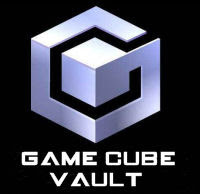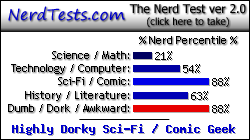Back in the early days of the first PlayStation, Naughty Dog created Crash Bandicoot to try and give Sony a platforming mascot of their own. This worked to a certain extent, at least until Spyro came along and stole a lot of the limelight. The games offered traditional side on platorming with modern 3D graphics, along with a variety of other styles including levels where you had to run into the screen to avoid boulders, and later additions in the series added submarines, planes, and balls like the Atlaspheres from Gladiators to roll around in.
These days the Crash games feel a little dated, and they never really rivaled the genius of Nitendo's Super Mario 64. However, about a year into the life of the PlayStation 2, Naughty Dog in conjunction with Sony released Jak & Daxter: The Precursor Legacy. It was a breath of fresh air, featuring fantastic visuals (the animation and day/night cycles were particularly impressive) and a more free-roaming style, where you were free to travel from one level to the next and try the various challenges. Unfortunately, the game didn't sell as many copies as they'd hoped, which is always a risk with a new franchise. The game did build up a small fan base however, and rather than abandon the planned trilogy, Naughty Dog decided on a change of direction.
Jak 2 is a much darker, meaner game that the first part. It's still quite suitable for teenagers to play though - we're not in GTA territory here. At least not as far as the swearing is concerned. You see, the developers obviously took a long hard look at the GTA series and decided that was the direction they needed to go in, as a lot of Jak 2 takes part in a sprawling metropolis, Haven City. The game begins with Jak escaping from the clutches of the evil Baron Praxis, but you will find he's changed a bit since the last game. In the few years while he's been held captive in the Palace, the Baron has performed experiments on him with Dark Eco, and now he has some strange powers (which are very handy in a fight).
Once out of the Palace, you slowly get caught up in a revolution against the Baron and Crimson guards which sees you exploring sewers, pumping stations, metalhead nests, and many other locations within and without the city. To aid you in getting through all this, you are given a gun, which gets more modes the further you get through the game. The is a shotgun, normal blaster, a very fast chaingun an ultra powerful gun that homes in on enemies and takes down several at once. Changing from one gun to the other can be done on the fly just by pushing a direction on the d-pad, it's an excellent idea that avoids all the faffing around in menus that many games make you go through. You will also gain a hover board at a certain point in the game, and of course, this being modelled on GTA, you can steal a zoomer from any of the citizens wandering around the city.
Let's skip ahead to Jak 3 for a minute. When you start the game, you are initially cast out into the Wasteland. The major addition to the game over Jak 2 are buggies. There are about 10 different vehicles which you can use to bomb around the desert, from the rather pathetic model you start with, to the great behemoths that you can only drive by collecting Precursor Orbs and trading them in. There's even one with huge springs built into the suspension, which you must use to jump from one archipelago to the next. The new buggy missions include races, smuggler's run style package collecting, checkpoint racing, and shooting down huge creatures. While they are great fun and add a bit of variety to the game, I thought there wasn't enough of them.
So then, let's start comparing the two games. Graphically, both are fantastic, and from a technical point of view, the way the games stream the world from the disc so you don't notice any loading times is very impressive indeed. At various times I would just stand in a level, and watch as sun rose or set. The graphics of Jak 3 are perhaps slightly less varied that in 2, being predominantly set in the desert, but there's really not much in it.
A lot of the voice cast are present in both games, and among the games are Clancy Brown as Baron Praxis (who may be familiar to some of you as the Kurgan from Highlander). They're a highly talented and professional bunch, and the voice work in the Jak trilogy is some of the best of any games. Music is good, but it is often drowned out by all the shooting that goes on since Jak acquired his multi-purpose gun.
On to gameplay and originality, and for me, Jak 2 scores more highly in this regard. Upon it's release the addition of guns felt new and fresh, and the game still managed to contain more traditional platforming levels, vehicular challenges and mini games. While Jak 3 has expanded the range of gun even further, I found I stuck to the old favourites most of the time. The buggies are a nice idea but just when you're really starting to enjoy yourself the game ends, leaving you disappointed. Also new to Jak 3 are Light Eco powers, and one of these really sucks out the challenge of the game. Apparently, many people complained that certain parts of Jak 2 were too hard, and so Jak 3 has been toned down. When you add the ability to heal yourself, it's far too easy to survive most of what the game throws at you. While one or two missions could be annoying for a while in Jak 2, they're not as frustrating as some of the harder missions in the GTA games for example, and the fact that you can try as often as you like eases a lot of the frustration (for me at least).
How about value for money? Jak 2 took me about 20 hours to complete, but Jak 3 took much less than that. While there is a Hero (Hard) Mode, most people probably won't bother to go through the game again. Once you consider the fact that Jak 2 can be picked up for £20 brand new or around £10 second hand, it starts to look like the stronger of the two games. It also has the more interesting plot. There are many new characters introduced in the second game, and most of them are carried over to the third. Also, while Jak 3 wraps up all the loose ends, you may feel a bit underwhelmed by the "revelations" at the end. In other words, Jak 2 is the Empire Strikes Back of the trilogy, the dark, exciting middle chapter that leaves you wanting more, whereas, Jak 3 is the equivalent of the good-but-not-brilliant Return of the Jedi. Fans of the first to games will undoubtedly wish to see how the story ends, and they'll have great fun doing so while it lasts. However, it may be worth waiting until Jak 3 is a Platinum release, rather than splashing out £40 for it now.
Jak 2 - The RetroModern gaming score: 8 out of 10
Jak 3 - The RetroModern gaming score: 7 out of 10

Jak 2
Jak 3









